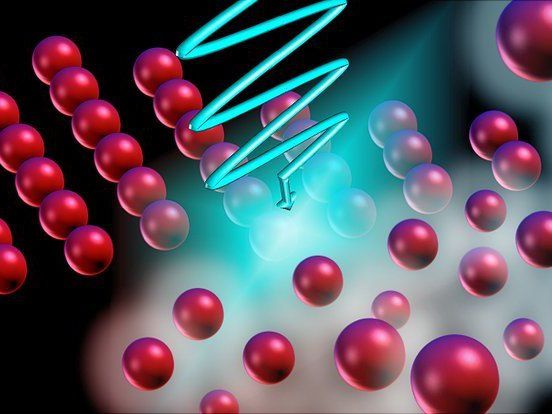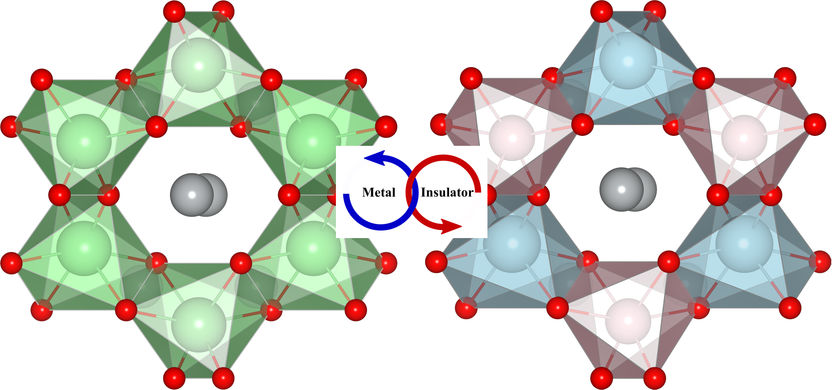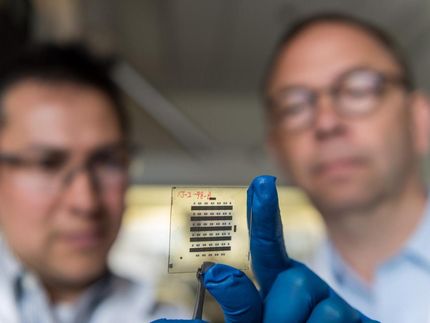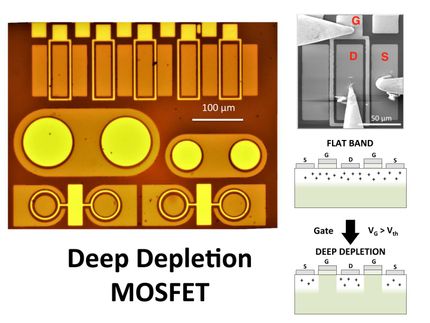New thin film transistor may lead to flexible devices
An engineering research team at the University of Alberta has invented a new transistor that could revolutionize thin-film electronic devices.
Their findings could open the door to the development of flexible electronic devices with applications as wide-ranging as display technology to medical imaging and renewable energy production.
The team was exploring new uses for thin film transistors (TFT), which are most commonly found in low-power, low-frequency devices like the display screen you're reading from now. Efforts by researchers and the consumer electronics industry to improve the performance of the transistors have been slowed by the challenges of developing new materials or slowly improving existing ones for use in traditional thin film transistor architecture, known technically as the metal oxide semiconductor field effect transistor (MOSFET).
But the U of A electrical engineering team did a run-around on the problem. Instead of developing new materials, the researchers improved performance by designing a new transistor architecture that takes advantage of a bipolar action. In other words, instead of using one type of charge carrier, as most thin film transistors do, it uses electrons and the absence of electrons (referred to as "holes") to contribute to electrical output. Their first breakthrough was forming an 'inversion' hole layer in a 'wide-bandgap' semiconductor, which has been a great challenge in the solid-state electronics field.
Once this was achieved, "we were able to construct a unique combination of semiconductor and insulating layers that allowed us to inject "holes" at the MOS interface," said Gem Shoute, a PhD student in the Department of Electrical and Computer Engineering who is lead author on the article. Adding holes at the interface increased the chances of an electron "tunneling" across a dielectric barrier. Through this phenomenon, a type of quantum tunnelling, "we were finally able to achieve a transistor that behaves like a bipolar transistor."
"It's actually the best performing [TFT] device of its kind--ever," said materials engineering professor Ken Cadien, a co-author on the paper. "This kind of device is normally limited by the non-crystalline nature of the material that they are made of"
The dimension of the device itself can be scaled with ease in order to improve performance and keep up with the need of miniaturization, an advantage that modern TFTs lack. The transistor has power-handling capabilities at least 10 times greater than commercially produced thin film transistors.
Electrical engineering professor Doug Barlage, who is Shoute's PhD supervisor and one of the paper's lead authors, says his group was determined to try new approaches and break new ground. He says the team knew it could produce a high-power thin film transistor--it was just a matter of finding out how.
"Our goal was to make a thin film transistor with the highest power handling and switching speed possible. Not many people want to look into that, but the raw properties of the film indicated dramatic performance increase was within reach," he said. "The high quality sub 30 nanometre (a human hair is 50.000 nanometres wide) layers of materials produced by Professor Cadien's group enabled us to successfully try these difficult concepts"
In the end, the team took advantage of the very phenomena other researchers considered roadblocks.
"Usually tunnelling current is considered a bad thing in MOSFETs and it contributes to unnecessary loss of power, which manifests as heat," explained Shoute. "What we've done is build a transistor that considers tunnelling current a benefit."
The team has filed a provisional patent on the transistor. Shoute says the next step is to put the transistor to work "in a fully flexible medium and apply these devices to areas like biomedical imaging, or renewable energy."
Original publication
Other news from the department science

Get the chemical industry in your inbox
By submitting this form you agree that LUMITOS AG will send you the newsletter(s) selected above by email. Your data will not be passed on to third parties. Your data will be stored and processed in accordance with our data protection regulations. LUMITOS may contact you by email for the purpose of advertising or market and opinion surveys. You can revoke your consent at any time without giving reasons to LUMITOS AG, Ernst-Augustin-Str. 2, 12489 Berlin, Germany or by e-mail at revoke@lumitos.com with effect for the future. In addition, each email contains a link to unsubscribe from the corresponding newsletter.
Most read news
More news from our other portals
Last viewed contents
Third-highest oxidation state secures rhodium a place on the podium - Discovery is a real surprise
Laser pulses control single electrons in complex molecules
Pyridostigmine

Breakthrough in molecular machines - Researchers have succeeded to obtain control of the molecular machines, which in the future may enable them to perform controlled movements
Anabolic_steroid
Bachem 2004 results with positive outlook for 2005
Tris(ethylenediamine)cobalt(III)_chloride

Material separates water from … water - A flipping action in a porous material facilitates the passage of normal water to separate it out from heavy water
Traveling_wave_tube

Disrupting crystalline order to restore superfluidity
Merger of CyBio AG into Analytik Jena AG Completed





























































